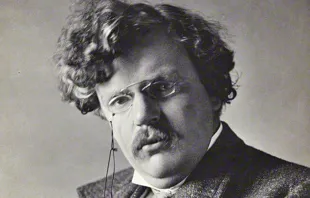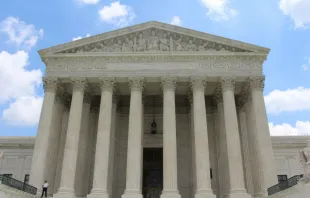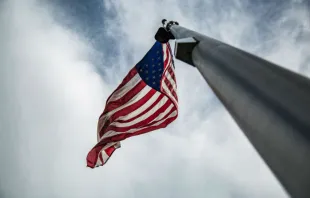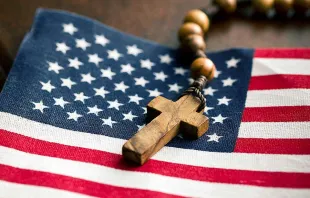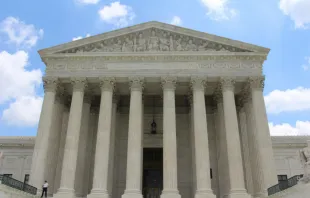Articles by Russell Shaw
Friendship – the remedy for racism
Sep 3, 2017 / 00:00 amAmid the cries of alarm in the wake of the tragic violence in Charlottesville, one unanswered question stands out: After all these years – all this bitterness and anguish and even bloodshed – what, if anything, can be done to end racism in the United States once and for all? Court decisions, laws, programs, institutions and processes of many kinds already have been put in place targeting racial bigotry. Perhaps, though, we need even more of them. If so, let’s have them. But there’s one solution that gets to the heart of the problem yet is often overlooked. It can’t be legislated or imposed by court order, but it’s essential just the same. It’s friendship. I grew up in a segregated city – Washington, D.C. – at a time when racial separation was largely taken for granted. I still recall an incident from that time that suggests how racial matters stood. It happened in my fourth-year classroom in my all-white Jesuit high school. (In case you wonder, that school has long had a racially mixed student body – I’m talking about something that happened a long time ago.) Several of my classmates got into a heated argument about segregation with our teacher, a young Jesuit scholastic. He argued that racial segregation was wrong. The kids argued that it was part of the natural order of things and therefore right. Listening, I realized that I agreed with the teacher. But it wasn’t something I felt very strongly about one way or the other. A few years after that, one of the few professors at Georgetown who socialized with students outside class invited me to drop by his home for a chat. When I got there, I was surprised to find another guest – a young black man from the professor’s hometown in the Midwest. It soon became clear that the two of them were old friends. I kept what I felt to myself, but I was astonished. The idea that a white man and a black man could actually be friends had simply never occurred to me before. Was that obtuseness on my part? Of course. That’s what living in a segregated environment does to you. These days nobody would call Washington a segregated Southern town, but blacks and whites still mostly live in self-segregated neighborhoods, still often study, work and even worship in segregated settings. And as far as I can tell, black-white friendships remain the exception rather than the rule. Back in 1958, the bishops who headed what was then called the National Catholic Welfare Conference (predecessor of today’s U.S. Conference of Catholic Bishops) issued a statement entitled “Discrimination and Christian Conscience.” This was ten years after Archbishop, later Cardinal, Patrick O’Boyle desegregated Washington’s parochial schools and four years after the Supreme Court in Brown v. Board of Education overturned public school segregation. The NCWC statement made many good points, including the fact that Catholic immigrants had also been targets of discrimination in their day. But perhaps the statement’s most important point was that the great obstacle to ending racism lies in “hatred or even indifference.” Friendship is the antidote to such sins of the heart. But friendship is impossible for people who don’t get to know one another and interact in settings conducive to making friends. Surely this is an area where the Church and the churches have something to offer. In the wake of Charlottesville, the U.S. bishops have set up a new Ad Hoc Committee Against Racism. Maybe the committee should give building friendship a look.
Learning to read Chesterton
Aug 19, 2017 / 00:00 amI suppose it will be considered heresy in some quarters, but I’ve never been what you would call a fan of the writing of G.K. Chesterton. Some people can’t get enough of GKC. I can. Not that I haven’t tried to read him. Now and then, failing to acquire this particular taste and suspecting the fault lies with me, I’ve tackled still another book by Chesterton in hopes of falling in love with him as others have done. In this way I’ve consumed quite a bit of Chestertonian prose. I’ve read The Everlasting Man and The Man Who Was Thursday, I’ve read the books about St. Francis of Assisi and St. Thomas Aquinas, I’ve read a smattering of Father Brown stories and a few essays. And I’ve always had the same question at the end: What’s all the shouting about? Chesterton the man, as he comes through in his writing, was obviously an admirable fellow – intelligent, good humored and generous even toward those with whom he disagreed. (Even in the “death of God” man, the raging German philosopher Friedrich Nietzsche, he sees something to speak well of, calling him “brave, proud and pathetic.”) But Chesterton the writer I find, not to put too fine a point on it, more or less impenetrable. Amid the verbal cleverness and rhetorical flourishes it can be difficult – for me at least – to tell what he’s saying. “Give me a break, Mr. Chesterton,” I silently plead. “Keep it short and simple.” He seldom does. That said, I’m delighted to report that I’ve finally read a Chesterton book that goes a long way toward making him accessible even to me. The title is ABCs of the Christian Life, and it’s a collection of excerpts, ranging from several paragraphs to several pages, drawn from Chesterton books and essays, and arranged alphabetically according to subject, from “Asceticism” to “Zion.” My thanks to the anonymous editor or editors who assembled this material in a compact volume of 180 pages for Ave Maria Press. As an introduction to Chesterton for people who haven’t read him, or a kind of synthesis for those who have and find him hard going, the book is a big help. Encountering Chesterton in short takes is the key to it. Consider a throw-away line in a graceful tribute to Queen Victoria. Of William Gladstone, the British Liberal leader who served four times as prime minister, Chesterton writes: “Mr. Gladstone seemed a fixed and stationary object…for the same reason that one railway train looks stationary from another; because he and the age of progress were both travelling at the same impetuous rate of speed. In the end, indeed, it was probably the age that dropped behind.” Chesterton, a convert to Catholicism, was an ardent defender of the faith who practiced apologetics with a kind of good-natured ferocity. Writing in a pre-ecumenical era (he died in 1936), he calls Protestants “Catholics gone wrong” but displays no ill-will or rancor toward them. Truth matters to Chesterton, matters immensely, and truth may never be sacrificed to expediency. His own credo is visible in an excerpt from his book Heretics: “There is one thing that is infinitely more absurd and unpractical than burning a man for his philosophy. This is the habit of saying that his philosophy does not matter, and this is done universally in the twentieth century.” At his best, I’m obliged to admit, GKC was indeed very good. You will find quite a bit of his best in this small volume.
Europe’s Christian identity
Aug 3, 2017 / 00:00 amLooking at things from this side of the Atlantic, it is easy to think of Europe as a single, united entity. Seen up close it’s not so clear. National identity keeps getting in the way. French, German, Italian, Polish, and so on – those ancient identities still matter to many people. As arguably they should. National identity bestows a sense of rootedness and continuity that the new European institutions apparently haven’t been able to supply up to now. A case in point: last year’s Brexit vote in Great Britain, shocking to the pundits, which took the country out of the European Union (or, more precisely, set that process in motion). Being English, it seems, still counts for more with the English than being European does. Religious identity is also part of the equation – today, a disputed one. This relationship once seemed overwhelmingly clear to someone like the Catholic apologist Hilaire Belloc, who famously wrote: “Europe will return to the Faith, or she will perish. The Faith is Europe, and Europe is the Faith.” Today’s secularized Europeans obviously aren’t buying that. Yet if they’re honest, many would agree that it’s a species of historical blindness to ignore the role played by Christianity in shaping Europe – both the Europe of the nations and Europe as a whole –not only in the past but also now. Yet ignore it some do. An institution that opened its doors in Brussels last spring stands as a kind of monument to that. It’s called the House of European History. Situated in a former dental museum close to the European parliament (of which it’s a project) and other European institutions, the House of European History offers an account of Europe described by one writer as “both typically modern and emphatically French and socialist.” Here, reports Arnold Huijgen, writing at Acton Institute online, “the French Revolution seems to be the birthplace of Europe; and there is little room for anything that may have preceded it.” In this narrative, the European Union itself is “the high point of European history,” he notes. But, says Huijgen, a professor at a Reformed Church theological school in The Netherlands, what’s most striking about the House of European History’s vision of European history is that “religion does not exist. … No longer is European secularism fighting the Christian religion; it simply ignores every religious aspect in life altogether.” This is hardly new. On the contrary, it’s been taking shape for many years. The erasure of religion from a museum of European history reminds me of a telling observation by Dietrich Bonhoeffer, the Lutheran theologian whom the Nazis executed shortly before the end of the war for his involvement in a plot against Hitler. In his unfinished, fragmentary, powerful Ethics, he identified the “new unity” introduced into Europe by the French Revolution in place of the old Christian unity shattered by the events surrounding the Reformation as a unity in “western godlessness.” “It is not the theoretical denial of the existence of a God. It is itself a religion, a religion of hostility to God,” Bonhoeffer wrote, adding that this modern godlessness “ranges from the religion of Bolshevism to the midst of the Christian churches.” No more can secular Europe ignore the formative role of religion than it can ignore the national identities within it. Pope Francis speaks of Europe as having a “spiritual patrimony” that needs communicating to Europeans themselves with “passion and a renewed freshness.” He was right. But where is that happening now? Not in Brussels, unfortunately.
The Supreme Court and church schools
Jul 20, 2017 / 00:00 amWill a preschool kids’ playground turn out to be the path that leads to ending a historic form of discrimination against church-sponsored schools in America? For the moment, the best answer to that question is “maybe.” The question itself suddenly came alive in the wake of an important Supreme Court decision in June declaring that Missouri acted in a manner “odious to our Constitution” (the words are Chief Justice John Roberts’) in refusing money from a playground safety fund to a Lutheran church’s daycare and preschool only because of their link to the church. The June 26 decision in Trinity Lutheran v. Comer was good news for religious interests. Potentially even better news was the Supreme Court’s announcement the following day that it was returning four other cases to the state supreme courts in Colorado and New Mexico to be reconsidered in light of Trinity Lutheran. The three Colorado cases focus on an attempt by a school district to establish a tuition scholarship program for students attending nonpublic schools, some of them religious. The state high court said no. At issue in the New Mexico case is a textbook lending program for nonpublic schools, some religious. That also drew a no from the state supreme court. In both states, the court decisions were based on sections of the state constitutions barring that bar giving state funds for any purpose to churches. More than 35 other states have such provisions, collectively known as Blaine Amendments. The name is that of James G. Blaine, a 19th century Speaker of the U.S. House of Representatives, who in 1875 proposed similarly amending the federal Constitution. His amendment failed, but similar amendments spread among the states in an era of widespread hostility to Catholic parochial schools. Whatever the Colorado and New Mexico courts do now – and despite the remand, they could still reject the aid in question under their states’ Blaine Amendments – these cases almost certainly will be back before the Supreme Court in a year or two. And it’s far from certain what the Supreme Court will do then. The court lined up 7-2 in Trinity Lutheran, with only Justices Sotomayor and Ginsburg voting against giving public funds to the church for its playground upgrade. Perhaps significantly, however, Justice Robert went out of his way to add a footnote to his opinion stressing that it applied only to state funding for this obviously narrow purpose. Only two justices – Thomas and Gorsuch – took exception to that, arguing that the principles underlying the decision, in Gorsuch’s words, “do not permit discrimination against religious exercise – on the playground or anywhere else.” In practice, what this means is that if the same nine justices were asked to consider broader forms of assistance, such as the school vouchers and textbooks involved in Colorado and New Mexico, the result could well be a 4-4 split, with the tie-breaking ninth vote resting, as in recent years it so often has, in the hands of Justice Anthony Kennedy. But will the same nine justices be on the court in a couple of years? Or will, say, two have stepped down and been replaced by two new members? Then the result is anybody’s guess. As the history of the Blaine Amendments shows, denying public assistance to church schools is a blot on the nation’s record with historical roots in 19th century anti-Catholic bigotry. Decisive corrective action is long overdue. If the path to that result lies through a school playground, so much the better. It’s high time.
War on chastity
Jul 11, 2017 / 00:00 amG.K. Chesterton got a lot of things right. Here’s one: “The moment sex ceases to be a servant it becomes a tyrant.” Evidence for the destructive consequences of tyrannical sex abounds in wrecked relationships, wrecked families, and wrecked lives. But there’s an alternative. The solution to the problem of sex run rampant lies in the cultivation and practice of chastity. Sounds simple. But what do we see all around us today? The answer to that is no less simple: we see a bad situation that appears to be getting worse. Fresh evidence for that depressing conclusion comes from a recent Gallup survey. On ten issues on which Gallup has measured public attitudes for years – since 2001, in most cases – the level of public approval hit a new high in early May. The issues include birth control (91% approval), sex between an unmarried man and woman (69%), gay or lesbian relations (63%), pregnancy outside marriage (62%), and pornography (36%). Even polygamy registered a new high, though admittedly still pretty low – just 17%. To a great extent, the explanation for numbers like these lies in the tyrannical dynamic of unfettered sex. Today, though, it also has another, important source – a complementary, ideologically driven campaign of opposition to traditional sexual morality. Not surprisingly, the Catholic Church is a prime target for this effort. Here is a case in point. Lately there has been a rather lively discussion of a book by Father James Martin, a Jesuit priest and writer, that calls on the Catholic Church to show “respect, compassion, and sensitivity” to the LGBT community. I haven’t read the book – Building a Bridge is its title – but I agree entirely that LGBT people do deserve respect, compassion, and sensitivity. For Catholics, of course, that shouldn’t be at the expense of compromised fidelity to the teaching of the Church. That said, I cite (for the light it sheds on the campaign against the traditional teaching) a scathing review of Father Martin’s book that appeared in the June 18 Washington Post. The reviewer is one Sally Kohn, whom the Post identifies as a CNN political commentator and who identifies herself as a lesbian. Ripping into the volume, Ms. Kohn notes that the words “respect, compassion, and sensitivity” come from the Catechism of the Catholic Church. But, she adds, the Catechism also repeats the Church’s time-honored disapproval of homosexual sex. And that being so, she has no interest in receiving respect, compassion, and sensitivity from the Church. Instead, what she wants is for the Church to admit that it’s wrong, and, following upon that admission, extend “full inclusion and equal dignity” to LGBT people who are “healthy, happy [and] sexually active.” Sally Kohn is hardly alone. Many other activists and would-be change agents of the sexual revolution say much the same thing. Lately, it appears, even Sesame Street has joined this chorus, observing Gay Pride Month by tweeting a rainbow flag-style lineup of its characters together with assurances that “Sesame Street is proud to support families of all shapes, sizes, and colors.” This, I take it, is a message the show now aims to communicate to its preschool audience. Writing of the disastrous fallacy that underlies the endorsement of tyrannical sex, G.K. Chesterton calls happy talk about sex “being free like any other sense [and] the body being beautiful like any tree or flower…either a description of the Garden of Eden or a piece of thoroughly bad psychology.” Pretty clearly we aren’t living in Eden now. Guess what that leaves.
America First for the Fourth of July?
Jul 3, 2017 / 00:00 amAlong with the customary cluster of cookouts, parades, and fireworks, the 4th of July this year brings something different to the observance of our great national festival. “America First” is President Trump’s not-so-new rhetorical contribution to Independence Day 2017. Opinion is divided on whether that’s good or bad. On this, a distinction may help. Taken simply as an ingenuous expression of patriotism, there’s no real objection to America First. Charity at the global level truly must begin at home, for unless it starts there – in love of one’s own country, that is – charity isn’t likely to thrive anywhere else. The Second Vatican Council says as much. “Citizens should cultivate a generous and loyal spirit of patriotism,” Vatican II teaches in its Pastoral Constitution on the Church in the Modern World. But then it makes a second, inseparable point. Citizens should practice patriotism, it says, “without narrow-mindedness,” keeping in mind “the welfare of the whole human family which is formed into one by various kinds of links between races, peoples, and nations” (Gaudium et Spes, 75). By that standard, how does Trump’s iteration of America First measure up? That question must be weighed in light of his withdrawal from the Paris climate accord, his problematic views on NATO, immigration and free trade, and much else. These plainly are complex issues about which reasoned disagreement is possible; but the president’s words and deeds, taken together, at least provide matter for concern when gauged by Vatican II. That said, moreover, there is no ignoring the historical baggage that the slogan “America First” inescapably carries with it. The story goes back to 1940 when Yale law students who included future president Gerald Ford, future Peace Corps director Sargent Shriver, and future Supreme Court justice Potter Stewart joined in establishing a group called the America First Committee. Its stated purpose was to oppose United States’ entry into the war then raging in Europe. By that time the world had witnessed the Hitler-Stalin nonaggression pact, the invasion and dismemberment of Poland, and the fall of France. The Luftwaffe’s air war against London and other British cities was underway, and a German invasion of Britain was thought to be imminent. By no means, however, was the America First Committee a mere creature of head-in-the-sand isolationism. Isolationism certainly was part of it, but the group also drew support from respectable sources, including a number of big businessmen. Its chief spokesman was the celebrated aviator Charles Lindbergh, who, besides wanting America to stay out of the war, also advocated an American military buildup in anticipation of the day when the country might have to fight. Future president John F. Kennedy sent a check for $100 together with a note calling America First’s efforts “vital.” At its peak, the group claimed 800,000 members in 450 chapters, most of them in the Midwest. Then came December 7, 1941—Pearl Harbor. Four days after the attack on America’s Pacific fleet, the America First Committee closed down for good. Historical parallels are never exact, and this one surely isn’t. Still, there may be a lesson here, one reinforced by Vatican Council II. Besides calling for patriotism, the council prayed that leaders of nations would “enlarge their thoughts and their spirit beyond the confines of their own countries” and, putting aside “nationalistic selfishness and ambition…cultivate deep reverence for the whole of mankind” (Gaudium et Spes, 82). That is still a good prayer. Yes, certainly, America First. But a very close second, the rest of the world.
America's multifaceted crisis of addiction
Jun 10, 2017 / 00:00 amIt would be too simple to say that temperance is the sole solution to America’s multifaceted crisis of addiction, but it’s entirely realistic to think there will be no solution that leaves out temperance. In the absence of temperance, we shall continue to apply patchwork, partial solutions here and there while piously decrying addiction as a bad thing. Not that the patchworks aren’t needed. For instance, Food and Drug Administration commissioner Scott Gottlieb’s proposal to reduce needlessly long periods of time for which, he believes, opioid painkillers often are prescribed sounds like a reasonable idea. Unfortunately, some medical groups are on record opposing mandatory education for physicians to accomplish it. Over at the Justice Department the new approach involves a return to tough law enforcement, including long prison sentences for drug-related offenses. Leaving the pros and cons of that to those better equipped to judge, one can only say it’s at best a bit of patchwork that leaves untouched the larger issues raised by addiction. And just here it’s important to recall that addiction isn’t only a matter of prescription opioids and street drugs. Viewed in a holistic sense, American addiction extends to things like the routine abuse of alcohol and the epidemic of internet pornography. And how about the 5 million Americans who spend 45 hours a week playing video games? If that isn’t addicted behavior, what is? About the only form of addiction that has been successfully eliminated (not totally, of course, but at least partially) is smoking, and there the change extended over decades and came about through a three-pronged effort invoking motives for quitting like fear, cost, and class-based snobbery. Isn’t it time to give temperance a try? “Temperance” commonly is understood in a narrow sense as referring only to abstention from alcohol. But it has a classical meaning that takes in far more. Aristotle understood that. “The temperate man desires the right things in the right way and at the right time,” he wrote. That may indeed involve swearing off some good thing, either temporarily or permanently, but more often it will mean using good things, but in a way that’s reasonable and suited to their purposes. At first one might think this was so obvious that it hardly needs stating. But apparently that isn’t so for large sectors of American society today. Granted the exceptions, ours on the whole is a very wealthy country where pampered self-indulgence is not only accepted but held up as an ideal. Doubt that? Then spend a little time watching TV commercials, with their unabashed appeals to easy, instantaneous gratification, whether by drinking beer or driving a luxury automobile. Pope St. John Paul II called this state of mind and soul “superdevelopment” and said that in its own way it was “as harmful as excessive poverty.” Whatever you call it, it’s the mortal foe of temperance. Intemperance is typical of children and of adults with childish temperaments. That suggests that acquiring temperance is a matter of formation, a part of growing up. And that means temperance and the behaviors associated with it can and should be taught. Teaching temperance is a central task of formation agents who include parents, churches, schools, and the media. And there’s the rub. There is money – big money – to be made by exploiting intemperance, and the formation agents of American popular culture seem bent on making it. Find a way to change that, and we will have taken a giant step toward solving the national crisis of addiction.
Trump and the Media
May 27, 2017 / 00:00 amJust when you think things can’t get any worse, they do. That’s been the story of Donald Trump’s relationship with the media for a long time, and we aren’t seeing the end of it yet. I don’t wish to add to the hysteria by declaring this situation a crisis. But if it’s not that, what is it? It would be absurd to call the clash between Trump and the media an unfortunate misunderstanding, sure to blow over in time. Mutual antipathy runs too deep for that. This faceoff between the president and the press will persist until Trump leaves office – whether that be in January 2021, January 2025, or a few months from now. So, lacking a better word, let’s use a nonpartisan term and just call the situation a mess. Surely everyone can agree on that. The question before us is how the media should be covering this mess – of which, be it noted, the media are part – and how we the readers and viewers should evaluate the results. Here I find some help in a disturbing piece by Mark Hemingway in the neoconservative Weekly Standard. Its provocative title: “Wow If True.” That’s shorthand for the semi-fake news items – short on facts, long on opinions and unnamed sources – that are standard fare these days for some popular bloggers with a fondness for conspiracy theories: Wow if true! And not only those bloggers. Hemingway doesn’t mention it, but even mainstream media like the Times and the Post have sometimes allowed dislike of the president to get the better of them and made their news sections day-in day-out forums for Trump-bashing. Hemingway sums up: “The media, however contemptible they can be, remain a vital American institution. And the Trump presidency has Washington journalists in disarray in ways that are deeply worrisome for those who think news should be grounded in reality, and reporting skeptical and rigorous.” There is a message here, I submit, for the Church. Lately the Vatican and the U.S. bishops’ conference have both adopted reorganization plans for their communication-related entities placing increased emphasis on the use of digital media and social media to serve the Church’s purposes in communicating. The plans reflect sound thinking about using media, but they leave out something else of great importance. In the context of current American politics, it can be stated like this: What should the Church be doing to help people meet the increasingly difficult challenge facing them as citizens to acquire and evaluate facts in the face of the firestorm of venomous controversy and confusion engulfing the American presidency and the press? Some years back, the Pontifical Council for Social Communications (reorganized out of existence in the Vatican’s new plan) addressed large questions about media in a series of important but little noted statements. In Ethics in Communication, published in 2000, it said media professionals who try to meet their responsibilities deserve audiences that are doing the same. Then it said: “The first duty of recipients of social communication is to be discerning and selective. They should inform themselves about media – their structures, mode of operation, contents – and make responsible choices, according to ethically sound criteria, about what to read or watch or listen to. “Today everybody needs some form of continuing media education, whether by personal study or participation in an organized program or both…Through her schools and formation programs the Church should provide media education of this kind.” Frankly, I don’t see a whole lot of that happening. If ever it was needed, it’s now.
Being legalistic and being law-abiding, and the big difference
May 13, 2017 / 00:00 amIn case you didn’t notice, Pope Francis thinks legalism is a bad thing – and that’s good news. For legalism, correctly understood, is opposed to authentic morality. The Pope returned to this theme, a favorite of his, in several recent homilies preached at his morning mass in the Casa Santa Maria, the Vatican guest house where he lives. In one, his special targets were the doctors of the law who tried to keep the apostles from preaching the risen Christ. For them, he said, the Word “was not made flesh – it was made law.” Over the centuries, he added, this same “rationalistic mentality” has often existed in the Church. As indeed it does today. The Holy Father’s critique needs to be taken very seriously. And that requires understanding what legalism is. To begin with, legalistic is not the same as law-abiding. To be law-abiding means obeying just laws – and even unjust ones, provided they do not require doing something wrong in itself, if disobeying would be too socially disruptive. But to be legalistic means – something else. What? The first volume (“Christian Moral Principles”) of The Way of the Lord Jesus, the three-volume magnum opus of the American moral theologian and ethicist Germain Grisez, provides a helpful answer to that question. (Disclosure: Grisez is a friend with whom I’ve collaborated on several books.) For various reasons, he explains, legalism was prevalent in moral theology from the 16th century Council of Trent up to Vatican Council II (1962-65). A legalist, he writes, “tends to think of moral norms as if they were merely a body of rules.” One result of that, he says, can be seen in “the suggestion that the Church might or should change its moral teaching, as if it were changeable law rather than unchangeable truth.” Then came Vatican II, whose document on the training of priests calls for a reform of moral theology. Taught “in the light of faith, under the guidance of the magisterium of the Church,” it says, moral theology should be more Christocentric, should “draw more fully on the teaching of holy Scripture” and should show the duty of Christians “to bring forth fruit in charity for the life of the world” (Optatam Totius, 16). Since the council, many theologians have worked hard at this. Some unfortunately have not. Instead, they have treated doctrines – the Church’s teachings on matters of sexuality are a good example – as if they were rules, rather than understanding them as moral truths. On that basis, they have urged either changing the rules or else simply ignoring them in light of private discernment and, it seems, something akin to individual illumination by the Holy Spirit. It’s a curious fact, as Grisez remarks, that this version of a new moral theology is in its own way “as legalistic as the old.” Typically, it devotes much time and effort to “trying to lessen the obligations of Christian life….Doing as one pleases is then called ‘following one’s conscience.’” The old legalism is a morality of young children, for whom being good means doing what parents and other authority figures tell them to do, while being bad means disobeying. Pope Francis aptly terms this “a theology of yes, you can [and] no, you can’t.” More recently, though, we’ve seen a morality of adolescence that frequently involves acting out against authority and operating by impulse and feeling. It’s the flip side of childish morality. And in the end the new legalism is even more unsatisfactory than the old.
A new round in the liturgy translation war?
May 1, 2017 / 00:00 amThe immortal Yogi Berra said it best: “It’s déjà vu all over again.” That was my first reaction to the news that a new Vatican commission had been established some time back to consider – again – the question of liturgical translations. Really, you can’t help wondering if another round in the debate about the words of the Mass is exactly what disputatious Catholics – already arguing among themselves over everything from immigration policy to the eighth chapter of Amoris Laetitia – need right now. On the whole, I’d say it wasn’t. The aims of this new commission, established within the Vatican’s Congregation for Divine Worship and the Discipline of the Sacraments, are said to be two. First, a review of the norms established by Pope St. John Paul II in 2001 for translating the Latin texts of the Mass and the sacraments into English and other vernacular languages. Second, decentralization of the task of liturgical translation in order to give more authority to national bishops’ conferences. Herewith a few thoughts about each of these matters. Let’s begin with a bit of history. Reading what Vatican Council II actually said in its liturgy constitution Sacrosanctum Concilium makes it perfectly clear that the council fathers, while approving some use of the vernacular, took it for granted that Latin would remain largely the language of the Mass and the sacraments. The rush to a 100% vernacular liturgy after the council was the bright idea of liturgical reformers rather than Vatican II. The early version of the Mass in English was klunky and pedestrian. Even worse, it was done by the principle of “dynamic equivalence” which, whatever else it may have meant, didn’t mean strict adherence to the Latin text. The papal corrective of 2001, in a document called Liturgiam Authenticam, marked a shift from dynamic equivalence to “formal equivalence” – closer to the Latin, that is. Which brings us, roughly, to the current version of the Mass in English. Hardly perfect, it’s nevertheless an improvement over what came before it. And to people who are still fretting over “consubstantial” in the creed, I say: Live with it, it won’t do you any harm. Similarly unpersuasive is the suggestion to give more control over translations to conferences of bishops. Having sat through many hours of debate on just this subject as a staff member of the U.S. conference and later as a reporter covering bishops’ meetings, I conclude that this isn’t something you want to leave to a committee of 200-plus people – not even earnest, well-disposed ones like these. That said, it’s undoubtedly true that there really is a problem about the liturgy today. But the problem doesn’t have a lot to do with the translations. Nor does it lie in liturgical aberrations like clown Masses and balloons, which came and went during the days of craziness half a century ago. The underlying problem instead is the decline of the sacramental sense – the fragile discernment of transcendence amid the limitations of our immanence – which has been going on in Western culture over the last several centuries (and which, one might add, is unlikely to be halted, much less reversed, by translating the Mass into the vernacular). For a serious, erudite discussion of this matter, I recommend a careful reading of Real Presences, a difficult but illuminating volume published years ago by the critic George Steiner. Meanwhile let’s wish that new Vatican commission well. But let’s also hope the commission doesn’t see more tinkering with translations as the answer to a deeper problem.
Toxic Culture
Apr 17, 2017 / 00:00 amIn today’s America, as in other countries like it, people of faith are facing a question of critical importance: How should they respond to a dominant secular culture that’s not just hostile to their beliefs but bent on forcing them to conform to its values and, not incidentally, winning the allegiance of their children? Fresh attention to this question has lately been stimulated by the publication of three much-discussed books: Strangers in a Strange Land by Archbishop Charles J. Chaput of Philadelphia (Henry Holt), The Benedict Option by conservative writer Rod Dreher (Sentinel), and Out of the Ashes by Providence College professor Anthony Esolen (Regnery). In fact, the problem has been waiting to explode for years. As far back as 1870 ornery Orestes Brownson, the leading American Catholic public intellectual of the 19th century, grumbled prophetically: “Instead of regarding the Church as having advantages here [in America] which she has nowhere else….I think the Church has never encountered a social & political order so hostile to her.” Time passed, and as change set in, other farsighted individuals began to share Brownson’s dark vision. Father John Courtney Murray, S.J., saw the problem taking shape in his 1960 classic We Hold These Truths. Philosopher Alasdair MacIntyre dissected it at length in his seminal volume After Virtue, first published in 1981. Since then others, the present writer among them, have discussed it many times. Now, it seems, recognition of the problem has become all but unavoidable. Hence the note of urgency in the Chaput, Dreher, and Esolen books. Particularly alarming has been the fallout from the Supreme Court’s 2015 Obergefell decision which came as a belated wakeup call alerting people of faith to the precariousness of their situation. It’s not just that in Obergefell the court redefined marriage while legalizing same-sex marriage. Even worse, a majority of Americans appeared to welcome the arrival of gay marriage, even as the secular state demonstrated its determination to quash dissent, starting with wedding cake bakers and florists but in time likely moving on to the rest of us. Next on the agenda are transgender rights, now being promoted by media like the New York Times and Washington Post with the same ideological fervor they brought to selling gay marriage before Obergefell. All this is happening, furthermore, at a time when religious practice and church affiliation are in decline in America. As of last September, 23% of U.S. adults called themselves atheists, agnostics, or “nothing in particular” in religious terms, double the number in the 1980s. Confronted with this state of affairs, religious Americans have limited options. One of these is cultural assimilation: abandoning the fight and adopting the secular world view. Large numbers of Catholics, to speak only of them, have done that and others are moving in the same direction. That unhappily includes very many young people. The positive options are overlapping and must be pursued simultaneously. Continuing to fight the culture war is one, since this is a war that must be fought as a matter of principle. Creating a new subculture grounded in religious values and organized around faith-based institutions is another, and this already can be seen happening here and there. The third option is to make the new subculture a source and setting for a serious effort to form the faithful for the evangelization of secular culture by the witness of their lives. Archbishop Chaput writes; “That work belongs to all of us equally: clergy, laity, and religious.” So it does. It’s the Christian vocation.
Dialogue between Science and Religion
Mar 30, 2017 / 00:00 amAs it happens, it was Ash Wednesday when I casually flicked on an all-news radio station just in time to catch a quickie interview with a scientist. He’d written a book about the origin of the universe and wanted everyone to know that this particular story doesn’t require anyone to believe in the existence of God. On the contrary, he said, from the start “the molecules” possessed a built-in dynamism that moved them to organize themselves into systems of ever greater complexity. Let those molecules do their thing long enough, and – voila! – the universe. As I listened, a question formed in my mind: “And where, eminent sir, did the molecules come from?” Naïve? Perhaps. But consider the naiveté of the scientist’s remark. It was typical of the pronouncements on spiritual matters made rather often these days by people – by no means always scientists – who purportedly speak with the support of “science.” Science is a wonder, to be sure, and scientists are gifted people to whom we owe vast increases in our knowledge of, and ability to manipulate, the physical world. The more science tells us about the operations of this remarkable world, the more light is shed on the extraordinary creativity of God. That said, however, it must also be said that some scientists exhibit a childlike hubris in pronouncing on questions that lie beyond the scientific method’s capacity for shedding light. That includes, but is hardly limited to, the question of God. Several years ago a New York University philosopher named Thomas Nagel caused a stir – and received not a few personal attacks – with a book called Mind & Cosmos (Oxford, 2012) that was sharply critical of this sort of overreach. Nagel, a nonbeliever himself, aimed his critique at the currently popular neo-Darwinian account of human mental functions, calling it “a heroic triumph of ideological theory over common sense.” With the necessary adaptations, Nagel’s critique applies to any similarly reductionist account of the world – such as one that explains the existence of the universe and everything in it by the action of molecules whose existence apparently can’t be explained. Religion sometimes makes its own contribution to this problem by giving a simple-minded account of God. A prominent example: Michelangelo’s depiction of the creation of Adam on the Sistine Chapel ceiling, where God is represented as a powerful old man with a flowing white beard. This is great art, but it is also very bad theology to the extent that, taken literally, it reinforces the anthropomorphic fallacy which supposes God to be pretty much like us, albeit much bigger and smarter. So what is God like? Or more properly, what can we know about him? St. Thomas Aquinas makes the crucial point that “we cannot know what God is, but rather what he is not” – the way of negation it’s called. Revelation aside, such positive knowledge of God as we may have is knowledge by analogy, which comes from knowing created things: God is something like this, something like that, but very unlike anything in our experience. Above all, God is transcendent – he exists in an order of being altogether outside our own. And, as Notre Dame historian Brad S. Gregory remarks in his important book The Unintended Reformation (Harvard, 2012), “If real, a transcendent God is by definition not subject to empirical discovery or disproof.” This is heady stuff, hardly self-explanatory, but it’s a necessary starting point for dialogue between science and religion. Simplistic salvos from either side are no help in that.
Catholic Cultural Assimilation
Mar 18, 2017 / 00:00 amIt’s a commonplace to say that America, along with other Western countries, is currently experiencing a cultural—which is to say: moral—crisis. And, in some quarters at least, it’s hardly less common to say this presents the Church with both a challenge and an opportunity. The opportunity is to save America by presenting the faith as a credible option, thereby helping to make America—as our president would say—truly “great again.” The challenge is that unless the Church really can do that or something like it, it is likely to suffer continuing assimilation into a secular culture deeply hostile to Catholicism, together with rapidly falling numbers and growing cultural (moral) irrelevance. What isn’t so often said, however, is that in facing up to these alternative scenarios American Catholicism suffers from a serious, internal handicap. Huge numbers of its adherents—one hesitates to say the Church itself, although in practice it amounts to that—share the values and behaviors of the crisis-ridden culture which they should be striving to bring to its senses. To look upon these assimilated Catholics as potential “missionary disciples”—a term borrowed from Pope Francis—is like asking patients in a field hospital (the Pope’s preferred metaphor for the Church) to rise from their sick beds and busy themselves healing other wounded victims of the culture war outside. One of the great strengths of Archbishop Charles Chaput’s new book Strangers in a Strange Land (Henry Holt and Company) is its grounding in clear-eyed recognition of such unpleasant facts bearing upon the current situation of Catholicism in America. That positions him to offer prescriptions without falling into the happy talk that renders many discussions of these matters unproductive or worse. As most engaged Catholics are aware, Archbishop Chaput, archbishop of Philadelphia, is an important intellectual and moral leader in the Church in America today. His new book, rich in references to the work of other contemporary thinkers of note, is a product of intelligence, integrity and courage that speaks the truth in charity. Fundamental to it is an incisive critique of the “tyrannous logic” of liberal democracy which, starting from an exaggerated and one-dimensional emphasis on individual rights, ends by adopting and enforcing secularism’s new morality. An example: the Supreme Court’s legalization of same-sex marriage followed by punitive measures aimed at florists and bakers whose consciences balk at serving gay weddings. Next up on the list of LGBT causes supported by media mouthpieces for the new morality like the New York Times and Washington Post: the transgender agenda. As Archbishop Chaput says, religion traditionally has acted as a “brake” on the tyrannous impulses of liberal democracy. But the capitulation of liberal churches and the public policy defeats of conservative ones have lately loosed the machine of tyranny to steamroller upholders of the tradition. In face of the resulting moral chaos, cultural assimilation weakens the ability of Catholics to be a force for stability. But the need is more urgent now than ever. Archbishop Chaput writes: “We have a duty as Catholics to study and understand the world around us. We have a duty not just to penetrate and engage it, but to convert it to Jesus Christ. That work belongs to all of us equally: clergy, laity, and religious….all share the same mission of bringing the Gospel to the world, and bringing the world to the Gospel.” Eschewing pat formulas, Strangers in a Strange Land speaks eloquently of that goal and of the obstacles to reaching it. That is much indeed.
Let Lent bring a spiritual Spring
Mar 4, 2017 / 00:00 amUp here in the northern half of the planet, where Lent coincides with the end of winter and the onset of spring, the imagery of rebirth and rejuvenation accompanying these natural events carries a powerful message: Shake off spiritual lethargy and be renewed in grace. Unlike what happens every spring, however, spiritual rebirth doesn’t take place automatically. Effort on our part is necessary. “Lent” is the name we give the deliberate process of spiritual renewal that the Church particularly emphasizes at this season. A central part of it is the practice of self-denial through which, paradoxically, we grow in self-possession in order to give ourselves more perfectly to God. “Nothing is so likely to corrupt our hearts and to seduce us from God, as to surround ourselves with comforts,” Cardinal Newman said in a sermon on self-denial. Lent is a special, though hardly exclusive, time for putting some of those comforts aside and focusing on God. That is what things like fasting and abstinence and “giving up something for Lent” are meant to help us do. With that in mind, and without pretending to any special knowledge drawn from personal experience in these matters, let me suggest a few common sense rules for the practice of self-denial in Lent. First of all, don’t inflict your mortifications on other people. If doing without something makes you short-tempered with the people around you, work on controlling your temper first or else find something else you can deny yourself without becoming a pain in the neck. In the same vein, remember that self-denial is between you and God. Your spiritual heroism, such as it is, shouldn’t be advertised. “Take care not to perform righteous deeds in order that people may see them,” says Jesus – specifically citing almsgiving, prayer, and fasting – in the Ash Wednesday reading from Matthew’s gospel. God knows what you’re doing. That is enough. Next, when looking for something to deny yourself, make it something in your everyday experience. Consider concentrating on what some spiritual directors refer to as your “predominant fault.” If, for instance, your problem is laziness, try getting up 45 minutes early on weekdays in order to get to Mass. If it’s a tendency to waste time, set a definite time for turning the TV on—and turning it off—and stick to it. Use the time you’ve gained by not sitting in front of the tube to help out around the house or maybe even read a good spiritual book. Finally, make it a point often to remind yourself why it is you’re practicing self-denial and even to pray about it. “We have to give ourselves really, not just in word but in deed and truth,” St. Josemaria Escriva once said. And giving ourselves to God and others requires that we first possess ourselves—something that the discipline of Lenten self-denial can help us to do. As for how to proceed, Newman calls attention to some practical possibilities: “Accept the daily opportunities which occur of yielding to others, when you need not yield…Turn from ambitious thoughts, and (as far as you religiously may) make resolves against taking on authority…Sell and give alms; therefore hate to spend money on yourself…Shut your ears to praise…Curb your tongue, and turn away your eye, lest you fall into temptation…Be up at prayer ‘a great while before day.’” “So shall self-denial become natural to you, and change come over you, gently and imperceptibly,” Newman adds. Kind of like winter giving way to spring during Lent.
The Struggle to Shape the Supreme Court
Feb 16, 2017 / 00:00 amJust as people who like sausage shouldn’t visit a sausage factory, so people who stand in awe of the United States Senate shouldn’t get too close to the confirmation fight over Judge Neil M. Gorsuch, President Trump’s first Supreme Court nominee, lest they see more senatorial sausage-making than they bargained for. It threatens to be an ugly affair. Gorsuch is, by all accounts, highly qualified. But not only is he conservative—a strict constructionist and textualist in interpreting the Constitution and the law—he is also the choice of a controversial president. Plus, it appears, distinctly prolife, having once written (in a book on assisted suicide and euthanasia) that “all human beings are intrinsically valuable.” His confirmation for the seat occupied by the late Justice Antonin Scalia is likely in the end. But not until Senate Democrats, spurred on by Minority Leader Charles Schumer (D-NY), have given him as hard a time as they can. In fairness, the Democrats have their reasons. Following Scalia’s death last year, President Obama named another federal appeals court judge, Merrick Garland, to succeed him. But Obama had already placed two liberal justices on the court—Sonia Sotomayor and Elena Kagan—and Senate Republicans, balking at a third Obama choice in a presidential year, blocked Garland’s confirmation by simply doing nothing about it. The Democrats cried foul. And their opposition to the Gorsuch nomination can be seen, at least in part, as payback for what happened to Garland. Although it’s hard to see how any of this adds up to a justification for denying a seat on the Supreme Court to a well-qualified candidate, the confirmation process will be marked by partisan conflict just the same. Robert Bork, were he alive today, could tell Gorsuch how bad it can get. Back in 1987 Ronald Reagan nominated Bork, a distinguished legal scholar, for a seat on the court. The events that followed set a precedent for the contentious Supreme Court confirmation battles that have been a recurring feature of national life since then. Hardly had Bork’s nomination been announced than Sen. Edward Kennedy (D-MA) took to the Senate floor to oppose it, invoking monsters from the liberals’ chamber of horrors—“back alley” abortions, segregated lunch counters, “rogue police” breaking down doors at midnight—to explain why putting Bork on the court would be a disaster. In the weeks that followed, Kennedy spearheaded a campaign of name-blackening that culminated with Bork’s rejection by the Senate, 58-42. Bork became a Catholic in 2003. Mrs. Bork today is a popular Catholic writer and lecturer. When and if Gorsuch does make it to the Supreme Court, the lineup there will be basically what it was before Scalia’s death—a 4-4 split between liberals and conservatives, with Justice Anthony Kennedy as the swing vote. It will take another conservative justice to shift that in the conservatives’ favor. Will Trump get another chance to name a new justice? There is no way to answer that for sure. The court’s three oldest members are Ruth Bader Ginsburg, 83, Kennedy, 80, and Stephen Breyer, 78. Ginsburg and Breyer, both liberals, are unlikely to quit voluntarily as long as Trump is naming their successors. As for Kennedy (for whom Gorsuch clerked many years ago), there’s no telling. Large issues hang in the balance here, among them the future of abortion law and the defense of religious liberty. Never mind about the sausage factory. Concerned Americans need to keep a close eye on the Gorsuch confirmation fight that lies ahead.
Conservatives and Trump
Feb 2, 2017 / 00:00 amMany religious conservatives are looking to the Trump years with high expectations. R.R. Reno, editor of First Things, says Trump’s ascendancy marks a significant defeat for “anti-Christian” elites while offering religious conservatives an opportunity to speak up and be heard on behalf of their beliefs and values. It’s too early in the game to make definitive pronouncements, but Reno could be right. Certainly we can expect the Trump administration, unlike its predecessor, to refrain from pressuring religious conservatives to violate their consciences by collaborating with things like abortion, same-sex marriage, and the transgender campaign. On a positive note, moreover, the appearances by Vice President Mike Pence and Trump counselor Kellyanne Conway at the annual March for Life—to say nothing of the president’s own supportive tweet—carried important symbolic weight. Credit Trump, too, with making a good start by issuing an executive order barring federal funding for abortion overseas. He has lived up to his campaign promise to name prolife jurists to the Supreme Court by nominating federal judge Neil Gorsuch. And meanwhile the Republican-controlled Congress has been moving forward on prolife legislation. But religious conservatives shouldn’t kid themselves. The culture war isn’t over by a long shot. Aggressive secularism’s efforts to eliminate the religious viewpoint from America’s public square will resume. The secularist mindset requires no less. That mindset has several overlapping components. Part of it is a fundamental hostility to religion. “There can be nothing more abominable than religion,” Lenin wrote, summing up a basic tenet of militant atheism. Religion, in this view, is a dangerous delusion and an obstacle to human flourishing. The sooner religious faith is eradicated, the better. To be sure, not all secularists propose to go that far. Probably more common is an attitude best described as conditional toleration. For those who want it, religion is okay in its place—but that place is in church. Religion has no meaningful role to play in the public square. There is, however, still another variation on the secularist theme: religion and religious believers can be accepted as junior partners provided that they cooperate in promoting secularist values, not least because church people who toot the horn for abortion or gay marriage function as useful tools in the ongoing project of undercutting religious conservatives. It hardly needs saying that some church people feel no qualms about obliging. But wrong and even dangerous as the secularist mindset is, religious conservatives shouldn’t demonize the secularists themselves. As long as no compromise of moral principle is involved, cooperation in pursuit of goals that truly benefit society as a whole remains a possibility. Religious conservatives also need to keep in mind the wisdom of not getting overly identified with one political party or one political leader. In particular, it would be a serious mistake for the prolife movement to allow itself to be stereotyped as no more than a faction within the GOP. People of faith did a lot to put President Trump in the White House, and he and his administration have begun taking praiseworthy steps to keep their promises to those voters. But politicians come and go, and political coalitions form and dissolve. Individuals are at liberty to make their own political commitments, but religious conservatism as a whole needs to keep an eye on the long term and maintain some daylight between itself and the new administration. At this understandably heady moment, the faithful should remember that reaching the goal of an authentic, comprehensive culture of life in America requires that.
Child Poverty and Family
Jan 21, 2017 / 00:00 amIn setting out to confront a problem, it’s necessary to understand its causes in order to apply realistic solutions. Child poverty in America provides a painful illustration of what comes of ignoring that truism. Since the mid-1960s, the government has spent more than $22 trillion fighting poverty. In that time the rate of child poverty has dropped a measly 1.5%--from 20.7% in 1965 to 19.2% in 2015, according to U.S. Census Bureau figures. A drop of 1.5% is better than no drop. But not a lot. What accounts for these disappointing results? The explanation, says Patrick Fagan, is that the War on Poverty largely ignored “the role of marriage in reducing poverty.” “Poverty is most prevalent in non-intact families [and] single-parent families are significantly more likely to fall into poverty than are married-couple families,” he writes. Fagan, a social scientist specializing in marriage and family, offers this analysis on his Marripedia website. If he’s correct—and the numbers bear him out—the central problem underlying the problem of child poverty is family breakdown. But the problem underlying family breakdown is essentially cultural. Or, if an old-fashioned word can be pardoned: moral. What we’re witnessing here is in large measure a product of a collapse of marriage-related values. Critics dismiss this line of reasoning as moralistic, but it’s not. There is nothing invidiously judgmental about tracing a glaring social problem to its roots in destructive human behavior. In fact, if there is any moralism at work here, it’s the moralism of critics who are committed to defending moral libertarianism. The good news is that the two-parent family remains the most common form for children. Last year, the Census Bureau tells us, 69% of the 73.7 million American kids under age 18 lived in such families. That was down from 88% in 1960 but still encouragingly high. Meanwhile, though, the percentage living with single mothers rose from 8% in 1960 to 23% in 2016 (those living with single fathers went from 1% to 4%). Now take a look at child poverty. The link to single-parenting is clear. Over 2 million American children live in single-parent families, more often than not, headed by never- married single mothers. And in 2015 nearly half of all the kids living with never-married mothers were in poverty. Patrick Fagan writes: “While many single mothers work wonders and raise their children well despite the obstacles they encounter, for many others the challenge is too great and their children suffer the consequences. Children raised in a single-parent family tend to complete fewer years of schooling, exhibit behavior problems, commit acts of delinquency, and participate in increased sexual activity.” But don’t place all the burden of responsibility on single-parenting. Kids living with cohabiting couples aren’t doing much better than those raised by single parents. In each case, nearly half the children live in poverty. For the most part, politicians seem unable or unwilling to come to grips with these facts. Instead, family and child problems are routinely analyzed reductively—reduced to dollars and cents—with things like job creation and raising the minimum wage presented as solutions. Economic factors are indeed important. I am not making an argument for spending less on poverty. Indeed, we should probably spend more, precisely to encourage marriage among low-income sectors of the population. But taking only economic factors into account shortchanges children and short circuits solutions. A society that allows family structure to collapse in order to facilitate moral libertarianism is buying long range trouble and hurting kids.
Letter to the President-Elect
Jan 9, 2017 / 00:00 amDear President-elect Trump: Unsolicited advice is said to be the best kind because it is the most easily ignored. But even if this letter accomplishes nothing else, at least it will help me focus my own thinking about what I expect from you as president. Admittedly, I didn’t vote for you, but neither did I vote for Mrs. Clinton. I was one of those voters, not few in number, who just didn’t find either an appealing choice. As you prepare to start your presidency, I hope I was wrong about you. My first piece of advice is that you reconsider your twittering. Notice that I say “reconsider,” not “stop.” I realize that you’ve ingeniously turned Twitter into an extremely effective political tool that you can hardly be expected to give up. But the campaign is over. You’re preparing to assume the mantle of leader of the free world, and the presidency is an office that doesn’t look kindly on occupants who sound off whenever and however they like. Spontaneity is all very well, but serious unforeseen consequences can flow from careless talk by a president. No more top of the head twittering, please. Next I urge that you give high priority to keeping the promises you made to the pro-life voters who did so much to elect you. Among other things, that means vigorously supporting measures to bar the killing of unborn infants capable of feeling pain, make the Hyde Amendment permanent law, and end federal funding of Planned Parenthood. Especially, it means naming a pro-life justice to fill the Supreme Court seat left vacant by Justice Scalia’s death, then continuing to nominate pro-life candidates for the court as often as you get a chance while applying the same criterion to the selection of judges for lower federal courts. (Well over a hundred of these important appointments are pending, I hear.) My next suggestion may be hard for you to swallow, but—patch up your relationship with the mainstream press. Many Americans look to that media as necessary sources of information. Sure, they have faults—I’ve often written about these myself—but the mainstream press plays a crucial role as an agent of accountability. Political leaders who brush it aside are brushing off an important instrument of democracy at work. Extend a hand of welcome to the many decent people among the undocumented aliens now in the United States and to America’s fair share of the refugees from violence and oppression in the Middle East. Yes, there are some bad apples among them. By all means, take steps to weed them out. But open the door wide to those willing and able to make a positive contribution to this country. There are a lot of other things I could mention, but let me close with a delicate but extremely important subject: your faith. During the campaign you didn’t present yourself as a deeply religious man, but you said you were a believer. I don’t expect you to become Saint Donald overnight, but I urge you to turn regularly to God for strength and light in facing up to the challenges of your job. Take time every day to read the New Testament. The Sermon on the Mount is a good place to start. You may find it at odds with your own gospel of being a winner, but remember—you’re the president for losers, too. Talk that over with God in prayer. And be sure that many of us will be praying for you. Hopefully, Russell Shaw
Christmas Blues
Dec 15, 2016 / 00:00 amFor many people, the season of good cheer is a deeply trying affair. I don’t mean unhappy souls who have good reason to be sad—the loss of loved ones, poor health, loneliness—but those who feel let down when Christmas doesn’t deliver all the personal gratification they were looking for. The funk they experience is what I call the Christmas Blues. Thinking of that recently, I recalled an incident related by St. Therese of Lisieux in her marvelous autobiography The Story of a Soul. It happened early on Christmas morning 1886, when Therese was twelve going on thirteen. Her family had a Christmas Eve custom. They would set out the children’s shoes in front of the fireplace, and when they got home from Midnight Mass the shoes were magically filled with gifts. This particular Christmas, though, Therese’s father was irritated about something or other, and she overheard him saying of the wonderful shoes, “Thank goodness it’s the last time we shall have this kind of thing!” Therese was a good, pious child, but by her own account an overly sensitive one, often bursting into tears and, when told to stop, crying all the harder just because she was crying. Now her father’s words cut her to the quick. When she went upstairs to take off her hat, her older sister Celine, sizing up the situation, told her, “Don’t go downstairs again. Taking the presents out of your shoes will upset you too much.” But not that time. She wrote: “Therese was not the same girl. Jesus had changed her. I suppressed my tears, ran downstairs, and picked up my shoes. I pulled out my presents with an air of great cheerfulness. Daddy laughed and Celine thought she was dreaming….Love filled my heart, I forgot myself and henceforth I was happy.” What had happened? Therese says simply that she had received “the grace of emerging from childhood.” Most of us aren’t saints of the stature of Therese of Lisieux, but some have had experiences not entirely unlike hers. A man I know wrote: “As a kid I thought of Christmas as a time for getting stuff. My parents, without intending it, taught me that. Both grew up in families that were anything but affluent, and the gift giving at Christmas was notably sparse. Now, in overcompensation, they lavished gifts on my sister and me. “That way of doing Christmas stuck with me for years. Since Christmas for me meant mainly the gross accumulating of stuff, it never made me truly happy. Then one Christmas I learned better. “By now I was a parent myself. One of my daughters had been sick for several days, and as Christmas wore on, she got worse and worse. Finally alarm set in. I bundled her into the car and drove to the nearest emergency room. “We had a long wait, but a doctor finally took a look and discovered that she had an infected tooth which the dentist had somehow missed when she saw him a week before. So they pumped her full of antibiotics and pain killers and sent her home, and soon she was resting comfortably and feeling better. “That was pretty much my Christmas that year. Instead of trying to make myself feel good by concentrating on the exchange of stuff, I spent the day trying to help somebody else. And know what? I felt good. It was a lesson I haven’t forgotten.” As St. Therese might have said, forgetting himself cured his Christmas Blues.
The pro-life issues facing President Trump
Nov 28, 2016 / 00:00 amMany social conservatives, though by no means all, were ecstatic at the election of Donald Trump. Whether they’ll still be ecstatic a few months down the line cannot be predicted – and by no means is this uncertainty entirely of Trump’s making. Start with the Supreme Court. During the campaign, Trump, who in the past had declared himself pro-choice, said he was now pro-life and would name pro-life Supreme Court justices. Underlining his commitment, he released the names of conservative jurists from among whom he said he’d make his picks. Social conservative ecstasy thereupon set in. After he’s sworn in as president, one of the first items on Trump’s agenda will be naming someone to fill the Supreme Court seat vacant since conservative Justice Antonin Scalia’s death last February. Senate Republicans refused even to hold hearings on President Obama’s pick – federal judge Merrick Garland, usually described as a moderate liberal – and Garland’s nomination became a dead letter with the election of Trump. The obvious question now is whether Senate Democrats, stung by the handling of the Garland nomination, will permit Trump’s nominee to be confirmed or whether they will play tit for tat by blocking him or her. Lacking control of the Senate, Democrats can’t prevent hearings and a committee vote, but they have the muscle to keep the full Senate from confirming Trump’s pick—or, perhaps, just his first choice, in order to make a point. Will they do that? Wait and see. However the impending struggle over confirmation turns out, it’s important to realize that, contrary to what’s often said, simply filling Justice Scalia’s seat with another conservative won’t produce a conservative Supreme Court majority on abortion and same-sex marriage. Why? Because on these issues Justice Anthony Kennedy, customarily described as a conservative, usually votes with the court’s four liberals (Ginsburg, Breyer, Sotomayor, Kagan), thus creating a five-member majority. Adding a social issues conservative to succeed Scalia will increase the social issues minority to four (Roberts, Thomas, Alito, and whoever), but that’s all. On these issues, Trump can’t shift the ideological makeup of the court unless and until he has a shot at naming a replacement for Kennedy or one of the liberals. The Supreme Court isn’t the only place where Trump’s ability to deliver on his promises to social conservatives will be tested. Pending in Congress are several matters of great importance to them. Hillary Clinton’s defeat means the Hyde Amendment barring federal funding of Medicaid abortions – a provision whose repeal Clinton promised to seek – is safe, as is its foreign aid counterpart, the Helms Amendment. Beyond that, though, it’s by no means certain that pro-lifers have the votes to achieve their cherished goal of defunding Planned Parenthood. Trump has spoken well of Planned Parenthood in general, although agreeing it should not get taxpayers’ money for abortion. There are similar uncertainties about the chances of pending legislation to bar abortions of “pain-capable” fetuses and to shield people with conscientious objections to same-sex marriage from being forced to cooperate with it. But under Trump the infamous HHS Mandate requiring church-related institutions and groups to pay for contraception and abortion in employee health plans seems certain to go. In short, Clinton’s loss saves social conservatives from serious damage to their causes while Trump’s victory opens up the possibility of important progress on several fronts – along with new obstacles, of course. A lot depends on how hard and skillfully Trump presses to realize the hopes of the people whose votes did much to make him president.




